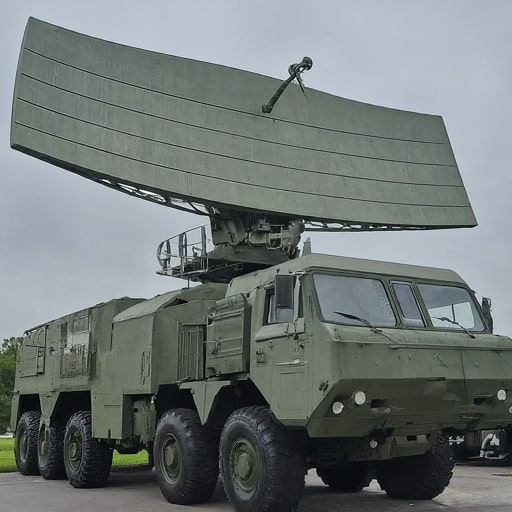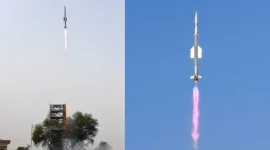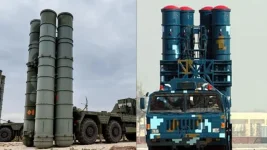- Views: 1K
- Replies: 7

Leaked sketches offer a glimpse into India's ambitious plans for its Long-Range Surface-to-Air Missile (LRSAM) program. The Defence Research and Development Organisation (DRDO) is currently developing a cutting-edge mobile High Power Radar (HPR) system designed to significantly advance the Indian Air Force's (IAF) air defense capabilities.
This powerful HPR system represents a crucial component of the LRSAM program. With a 30-ton weight and a massive 10-meter by 6-meter transportable antenna, the radar promises unparalleled detection capabilities. It will be transported on a specialized vehicle with a 60-ton load capacity and a travel speed of 20 kilometers per hour, allowing for deployment across challenging terrains.
The DRDO aims for the LRSAM system to counter a wide spectrum of aerial threats, including stealth fighters, conventional aircraft, ballistic and cruise missiles, precision-guided munitions, and unmanned aerial vehicles (UAVs). The LRSAM's projected range of nearly 350 kilometers would mark a substantial upgrade in the IAF's ability to protect India's airspace.
Codenamed "Project Kusha," the LRSAM program is still in its initial design phase. The IAF aims for operational deployment of the fully developed LRSAM system sometime between 2028 and 2029. This timeline underscores India's determination to build a robust air defense network utilizing domestically developed technology.
The HPR's expansive antenna indicates its superior radar capabilities. It is designed to swiftly detect and neutralize a broad array of aerial threats, including Stealth fighters, Conventional aircraft, Ballistic and cruise missiles, Precision-guided munitions and Unmanned aerial vehicles (UAVs).




